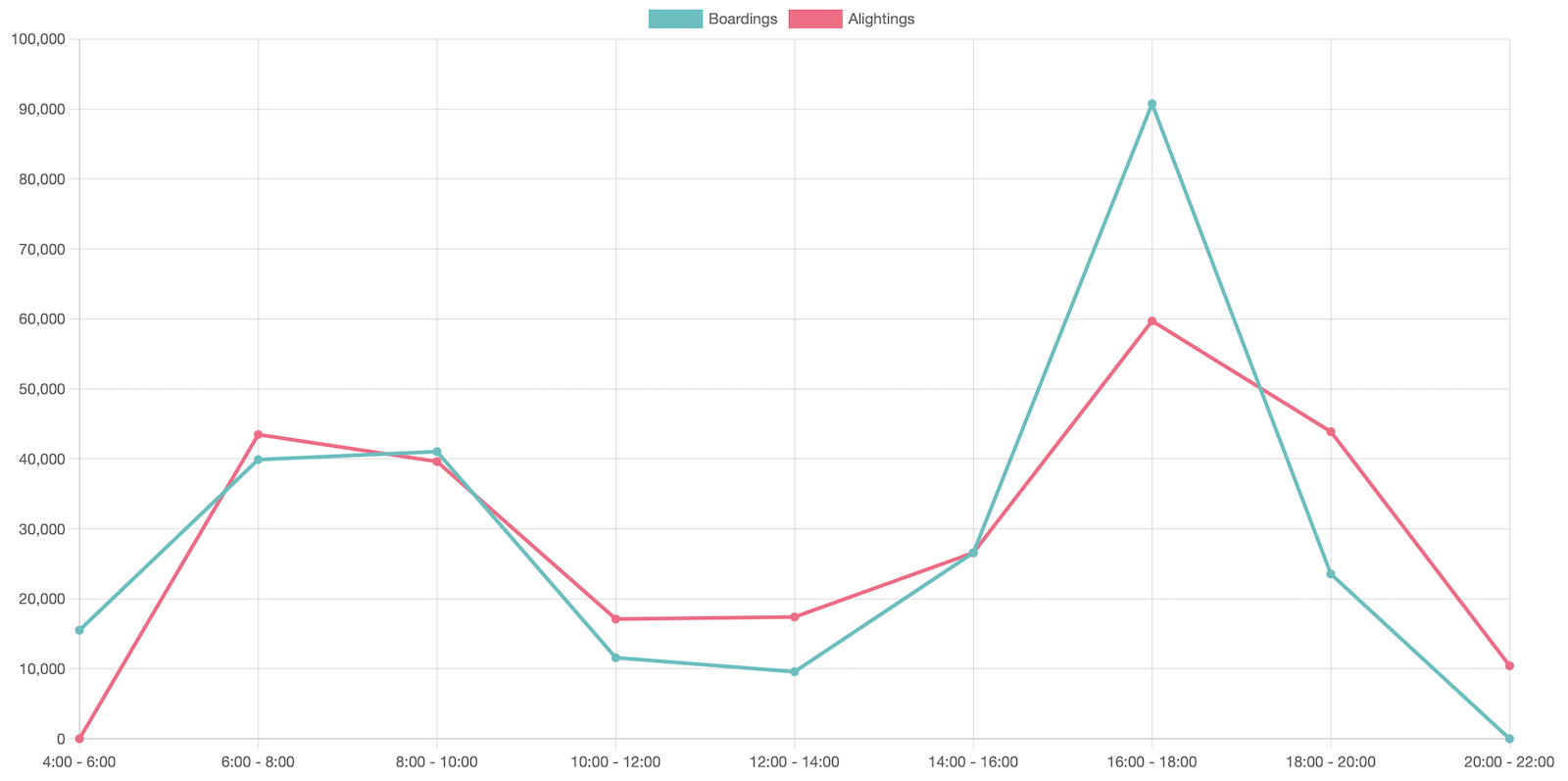About GTFS-ride
GTFS-ride is an open standard for storing and sharing fixed-route transit ridership data. Transit ridership data can answer questions such as:
- How many people rode the bus/train/ferry last week?
- Which routes have the most riders?
- What time of day is the busiest?
- What are the busiest stops in the system?

GTFS-ride provides transit agencies a standardized way to collect, store, share, report, and analyze their ridership data. Transit agencies can use GTFS-ride to share their ridership data with other agencies and organizations interesting in collecting and analyzing ridership data.
Why GTFS-ride?
Transit ridership data is needed to set policy, develop plans, and prioritize investments but is not easily available and/or not in a useful standard format. Transit agencies vary widely in their ability to provide sufficient quantities of high-quality ridership data, and the data that does exist is often of little use due to a high level of aggregation, broad scope, sparsity, errors, and lack of standardization.
These inconsistencies in the availability, format, and quality of ridership data make it very difficult (if not impossible) entities with an interest in multi-agency transit networks to make effective and informed decisions. Regional governments, researchers, policymakers and transit agencies themselves don't have an easy way to collect, store, share, report, and analyze their ridership data.
GTFS-ride provides a comprehensive (yet flexible) public transit ridership data standard. It was designed to improve the processes of ridership data collection, management, reporting, and analysis. Web-based software tools have been developed to support the core functionality of GTFS-ride.
GTFS-ride project report.
Read the full GTFS-ride project report (SPR 803).